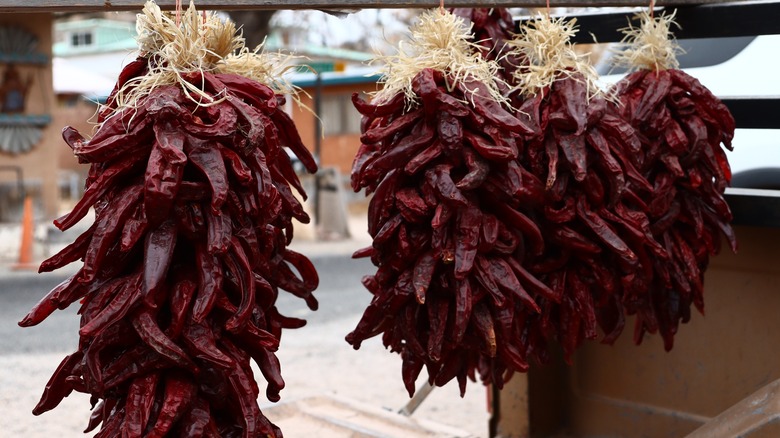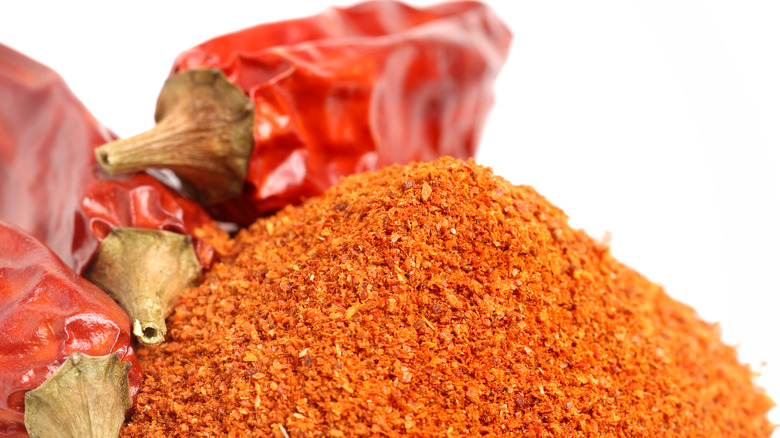The Heirloom Chimayó Chile Has Its Own Black Market
Chilies are native to Central and South America, and spread across the world by way of European colonizers and trade (via Splendid Table). According to Slow Food USA, Spanish conquistadors brought chilies with them into North America in the 1600s, where the chilies were then cultivated by indigenous communities. Chilies, much like grapes, reflect the land they are grown on. The terroir imparts unique characteristics into the chilies that cannot be replicated, so the chilies came to be identified by the region they are from. This is how the Chimayó chile came to be.
Chimayó, New Mexico, located about 30 miles north of Santa Fe, has a hot and dry climate with very little rainfall. These conditions make for a chile with a concentrated flavor, and the lack of water prevents the flavor from being diluted, notes NBC News. The Chimayó chile's rare "signature combination of spice and sweetness ... accentuated by a deep richness that some describe as smoky" are what make it so sought after, per Slow Food USA. Their heat level generally falls in the range of 4,000 to 6,000 on the Scoville Scale.
Potrero Trading Post describes how heirloom Chimayó chile seeds are hand selected and passed down from generation to generation. The chilies can be eaten fresh, but are usually sun-dried. Oven roasted chilies change in color to a dark red, but the sun-dried Chimayós retain a beautiful orange color.
The Chimayó chile is rare and expensive
The exquisite taste and small available amounts make the Chimayó chile highly prized. It sells for over $40 per pound, if it is even available for purchase at all (via Potrero Trading Post). Slow Food USA notes that because of the labor-intensive growing and processing of the chile and short supply, most of these chilies are consumed locally within the families that grow them.
Of course, the chilies are still in high demand from tourists wanting a taste of authentic New Mexico heat. This demand has led to cases of food fraud, according to Curiosity Magazine, where sellers are attempting to pass off other chile powders as authentic Chimayó chile. El Potrero Trading Post is one of the few places where the Chimayó chile powder can be purchased. Manager Nicolas Madrid says that there is not enough supply of the chile for a single restaurant in Santa Fe to utilize it (via Yahoo! Entertainment). The New Mexico Department of Agriculture is attempting to address fraud with the New Mexico Chile Advertising Act. The act requires a yearly verification process for all chile vendors that wish to sell chilies labeled as products of New Mexico.
The Chimayó chile may never be widely available because of its limiting factors, so connoisseurs of heat may want to make Chimayó, New Mexico a bucket list destination to taste this prized pepper.

